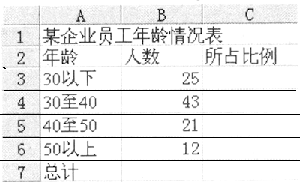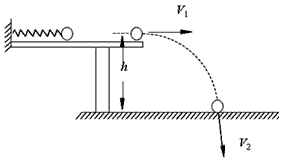阅读理解。
It is well known that the Japanese people's love of fish is almost as a bee's interest in honey. As fish
populations were decreasing, fishing companies were forced to fish further and further away from the shore.
Then they had a big challenge-how to keep the fish fresh for longer. So they decided to keep the fish
stored in freezers on the boats. But the public did not like frozen fish. So again the fishing companies had
a new bigger challenge. What they decided to do was to have fish tanks on their boats. After catching fishes,
they would put them in the tanks and keep them living there until they got back to shore. But in this protected
environment, lacking predators (掠食者), the fish stopped moving around. The Japanese public felt these
dull fish did not taste fresh, which had an unpleasant effect upon sales. Once again the fishing companies
had an even bigger challenge.
Stop for a minute! Before we go any further, I would like to ask "What are your challenges? How do you
handle an unexpected challenge?" May I think it this way that you should try to attack your challenges?
Conquer them with a Swiss Army knife. Take the most proper and simple tool that you can adopt to deal
with your situation.
Now back to our story. How did the Japanese finally figure out the fresh fish problem?Sharks! You
might think the same. Sharks were caught and put into the tanks with other fishes. Don't sharks eat fish?
Well, they do eat a few fish, but they did also keep more fish active alert (警觉的). The fish stay fresh
because they are challenged.
Now, try to keep yourself fresh by finding your own shark to offer yourself a challenge in your own
business and career.
1. The main reason for the fishing company to fish in the far sea is that _____.
A. the fish resource near the shore was decreasing
B. the fishes farther away from the sea tasted fresher
C. people would prefer eating fresh fishes to less fresh ones
D. it was getting harder and harder to keep fishes fresh
2. The relationship between fishes and sharks is similar to that between _____ in nature.
A. dogs and cats
B. monkeys and mosquitoes
C. wolves and antelopes
D. children and lions
3. The underlined part of the last paragraph means " _____."
A. If you went fishing, you might do as the fishing companies did
B. Try to find a big shark and you will meet your challenge
C. To succeed in life, you should always be ready to meet challenges
D. Sharks are usually compared to the challenges in people's life
4. The purpose for the author to write the passage is to _____.
A. tell the readers "no pains, no gains"
B. tell the readers how the Japanese keep the fish fresh
C. suggest readers looking for challenges to make progress
D. advise readers to find something difficult to do
 按要求对此工作表完成如下操作并原名保存: (1) 打开工作簿文件EX35.XLS,将表中各字段名的字体设置为楷体、12号。 (2) 将工作表sheetI的Al:Cl单元格合并为一个单元格,内容居中。 (3) 计算“人数”列的“总计”项及“所占比例”列的内容(所占比例=人数/总计),将工作表命名为“员工年龄情况表”。 (4) 取“员工年龄情况表”的“年龄”列和“所占比例”列的单元格内容(不包括“总计”行),建立“分离型圆环图”,数据标志为“显示百分比”,标题为“员工年龄情况图”。 (5) 将“员工年龄情况图”插入到表的A9:C19单元格区域内。
按要求对此工作表完成如下操作并原名保存: (1) 打开工作簿文件EX35.XLS,将表中各字段名的字体设置为楷体、12号。 (2) 将工作表sheetI的Al:Cl单元格合并为一个单元格,内容居中。 (3) 计算“人数”列的“总计”项及“所占比例”列的内容(所占比例=人数/总计),将工作表命名为“员工年龄情况表”。 (4) 取“员工年龄情况表”的“年龄”列和“所占比例”列的单元格内容(不包括“总计”行),建立“分离型圆环图”,数据标志为“显示百分比”,标题为“员工年龄情况图”。 (5) 将“员工年龄情况图”插入到表的A9:C19单元格区域内。
